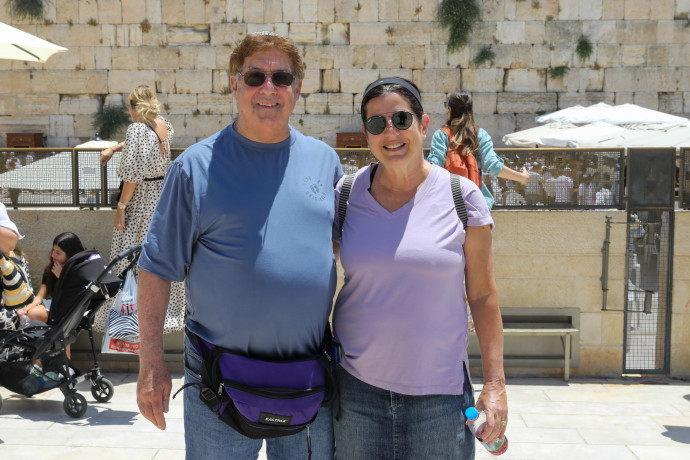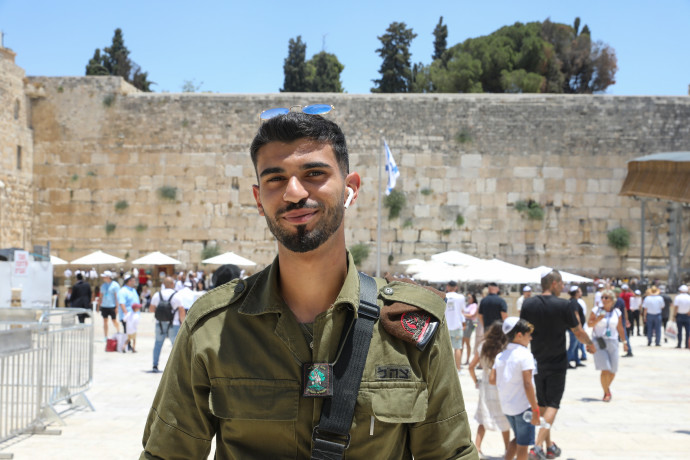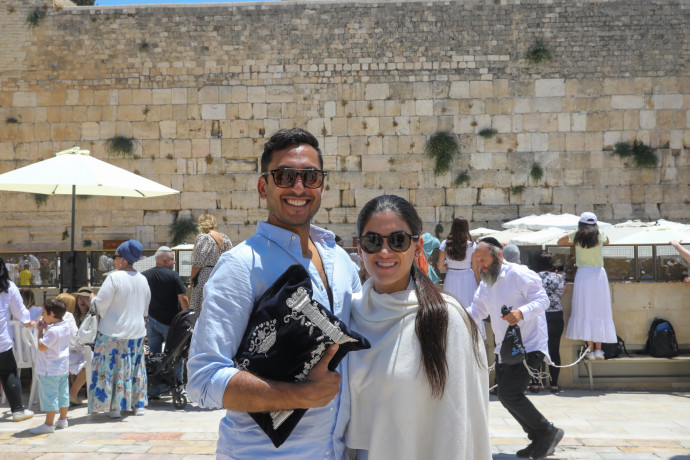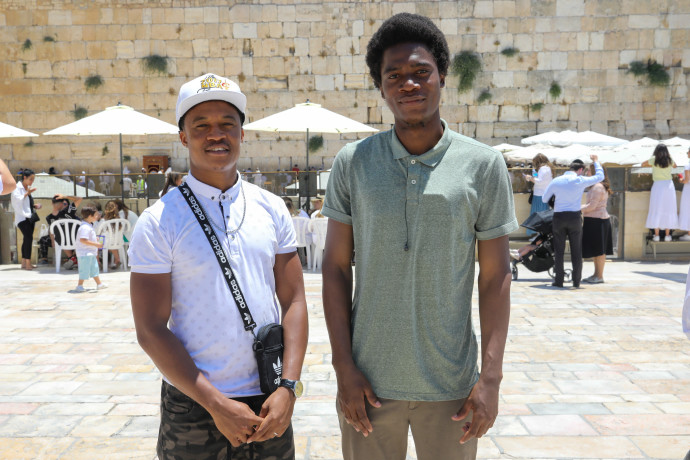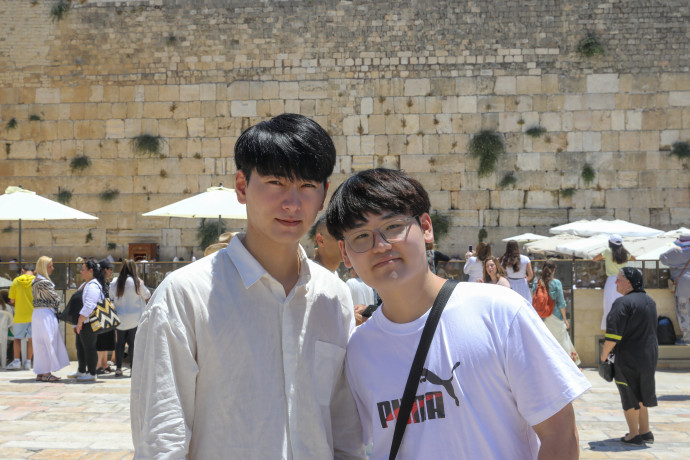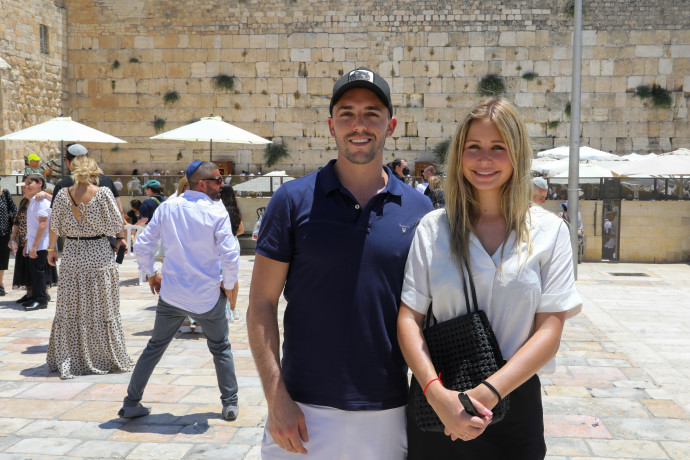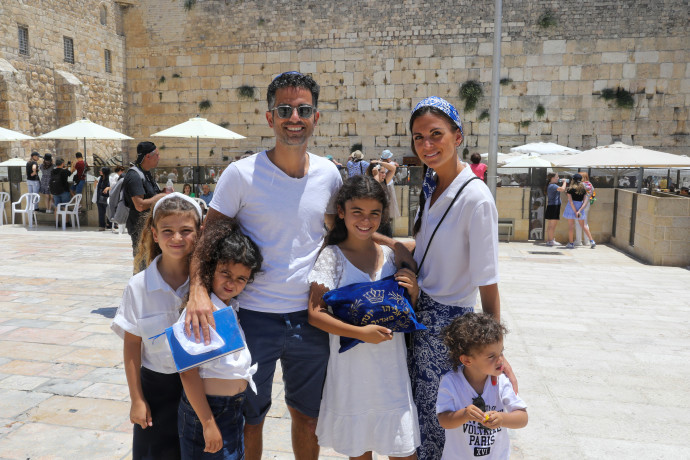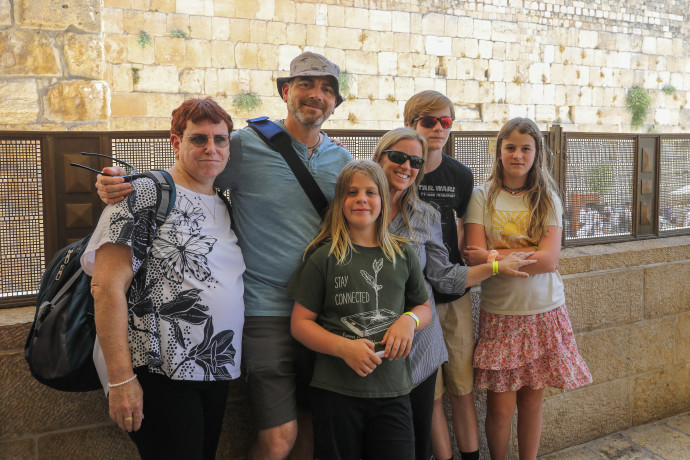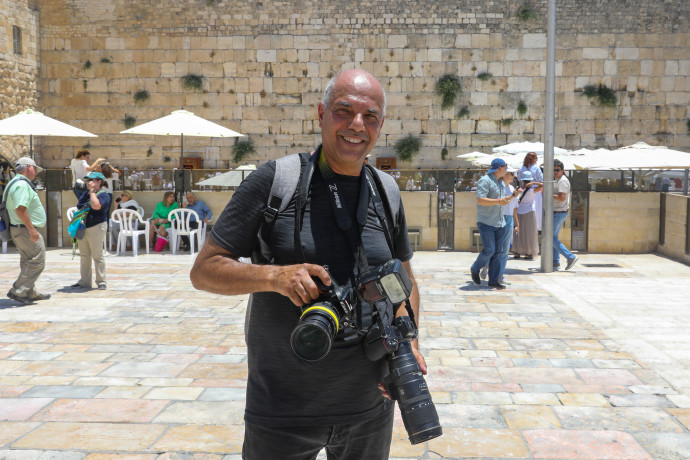Visitors to the Western Wall
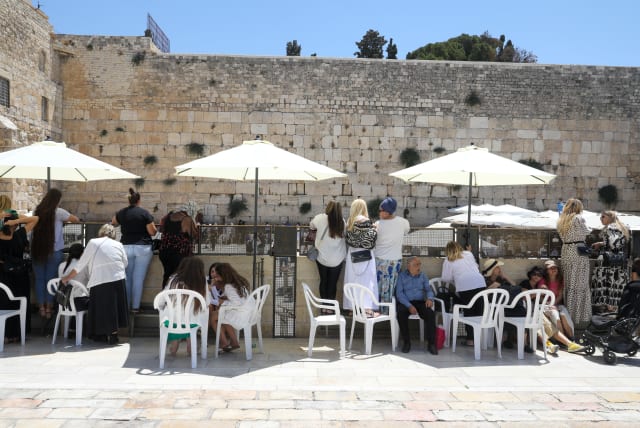
After two years of the pandemic, visitors from around the world have returned to the Kotel
Since the end of the pandemic period, tourists have returned to the Western Wall – Israel’s top tourist site – in droves. On this bright and clear Monday morning, Bar Mitzvah celebrants read from the Torah, as family members proudly watch their son or grandson read the Torah for the first time. Sounds of singing and ululation pierce the air.
While many visitors have come to celebrate family Bar Mitzvahs on this day, the Western Wall Plaza is filled with thousands of others from around the world who have come to pray or visit. Some approach the dun-colored stones, touch them with reverence, and kiss the wall, while others carefully insert folded prayers into the cracks and crevices between the ancient stones. Many have come to the Western Wall Plaza to learn more about the site and its meaning and are participating in tours of the Kotel Tunnels, the VR (virtual reality) experience and the Chains of Generations Center.
Who are the visitors to the Western Wall? On this sunny day, we spoke with visitors to the Kotel, asking them where they came from, why they were there, and their impressions of their visit.
Mark and Lynn Goldberg, Aberdeen, New Jersey
“My wife is from a modern orthodox family, but I was raised by a bunch of bagel and lox eaters,” says Mark. “But with the goings-on of the intifada and my child who was starting to become more religious, I figured I’d better go to Israel and go on some religious tours.” Mark’s first trip to Israel was in 2002, and he visited for the next five consecutive years.
Lynn’s first trip to Israel was in 1967, when she visited with her parents just after the Six-Day War. In 1975, she spent two months in Israel working at a hospital. Her last visit to Israel was in 2005 with Mark. This is their first visit to Israel in sixteen years.
For Mark, the Western Wall represents 3,000 years of Jewish history. “When you stand here,” he declares, “you see almost all the rules of history broken. Conquered peoples don’t come back like this, so this is a reflection of the validity and value of those teachings. When I come here, I am reminded that I am supposed to keep learning and hopefully share with my children and other people who are not even Jewish.
Adds Lynn: “It means a lot to me to see Jews from all over the world – Africans, Ethiopians, French, South America – we are all connected here.”
Shalev Kafri, Bet Aryeh
Shalev Kafri is from the settlement of Bet Aryeh, located near Rosh Ha’ayin and Elad, and serves in the IDF’s Golani brigade. Kafri is an occasional visitor to the Kotel, especially before Rosh Hashanah and Yom Kippur.
When asked why he visits the Kotel, he answers simply, “Jerusalem is the capital of Israel, and the Kotel is the holiest site in Israel. One has to come here.”
Shalev has spent the past two hours at the Kotel on this Monday afternoon. What does he enjoy the most about being here? Pointing at the wall, he says, “This.” Plus, he adds, “I love the atmosphere and the friends. Here, we are all one family.”
David and Elena Moradi, Los Angeles, California
Married for just over a year, David and Elana Moradi are in Israel for a ten-day visit and pray at the Kotel three times each day during this trip. “We connect to Hashem,” says David. “We need it.” Both David and Elena were born in Tehran to Iranian families that moved to the United States. Family members remain in Iran, and they cannot contact them. Despite the stress of not knowing their fate, Elena says, “We are blessed. “Not many people get to come here, so many times, or so often.”
Peter Evans, Migori, Kenya
Peter Evans, 28, hails from the city of Migori (pop. 393,00) in Kenya. He is in Israel on an agricultural training tour and has been in the country since November. Today is his first time visiting the Western Wall. “It is a little bit amazing,” he says. “I see people’s emotions and see them touching the wall. It is sacred. I am not Jewish, but I understand, because, for the Jews, it is the last wall remaining from their Temple.”
Sang Woo, Seoul, South Korea
Sang Woo, 28, is on his first visit to the Holy Land. He is a Christian and says he was attracted to Israel by the history here. This is the first time he has been to the Western Wall, and he says, “I learned so much about Bible, so I decided to go here to see the historical places. I am very excited.”
Daniel and Cassie Jay, Johannesburg, South Africa
“I wanted to cry when I touched the wall,” says Cassie, who is enjoying her first visit to Israel. “It was very emotional. It is amazing to see so many people here, seeing everyone praying at the wall, I could imagine what kind of love and good energy is going on when they pray.”
Daniel, who has been to Israel several times in the past, says that he experiences a similar feeling at the Wall. “I pray Shacharit (the morning services) every morning, and to come to pray at the wall is definitely different in terms of the energy and what you’re feeling. The pulse and the energy are very different than a regular shul – the energy that people have – is pure.”
Meir Adler, Manchester, England
Meir Adler, age 22, has been studying at the Mir Yeshiva in Jerusalem for the past five years. “I come here as often as I can,” says Meir. “I love this place very much.” Meir says that he feels very connected to the Wall, and visits at least once a week. When asked about the special connection that he feels here, Meir replies, “Hashem (God) is here.”
The Marek family from France
Speaking with the Mareks, a French Jewish family, I learn that they are visiting Israel for a wedding. They are staying in Netanya and traveled one and a half hours to get to Jerusalem. Why are they at the Kotel this morning, I ask? Says husband Yonatan, “The Kotel is where we are most connected to God. Here, I can concentrate on my prayers far more than in France.”
“This is the place where our prayers are heard,” adds his wife. When we ask one of their young children why she is at the Wall, she replies, “I couldn’t stay at the hotel alone, so I had to come with.”
Medad and Sigourney Goldman, Asheville, North Carolina
This year, the Goldman family is marking their twelfth visit to Israel. “We haven’t been here in three years, due to Covid,” says Sigourney, “and we wanted to come to the Kotel to see new things, especially the new Kotel Tunnel Tour,” she says, referring to the new ‘Great Bridge Route,’ which takes visitors underground where they see remnants of the Great Bridge that led to the Second Temple. When asked about the significance of the Kotel, one of the children pipes up, “It’s the holy big wall!”
Medad adds that all of the attractions that have been added over the years, including the Kotel Tunnel Tours, the Chains of the Generations Center, and the Virtual Reality experience of the Second Temple, “gives us a connection that we can vicariously experience through the people who lived here thousands of years ago. It is unbelievable to imagine what was here during the times of King David and Herod.
Zohar Tzabari, Tzoran
Zohar is a photographer from Tzoran (population 22,000), southeast of Netanya, and he visits the Kotel several times a year to photograph Bar Mitzvah ceremonies. “I am excited and emotional whenever I am here. It is noisy and a bit messy, but when you see the stones, and the Bar Mitzvah boy who is excited, along with his parents, it’s everything.”
Ten different visitors out of thousands, on a sunny day at the Western Wall. Everyone who comes is searching for something, be it prayer, meaning, study or understanding.
The Western Wall is also known as the Wailing Wall or the Kotel


